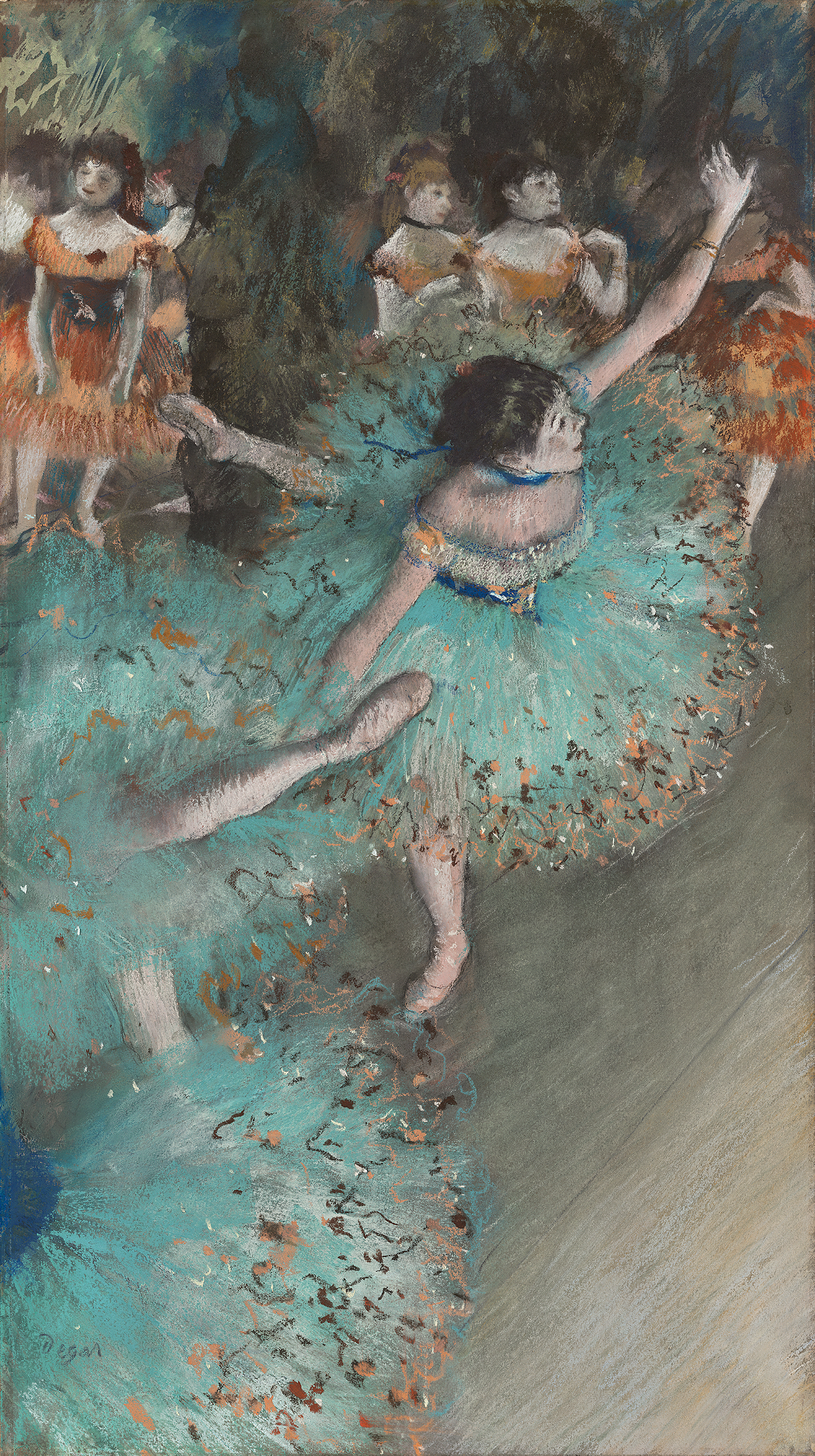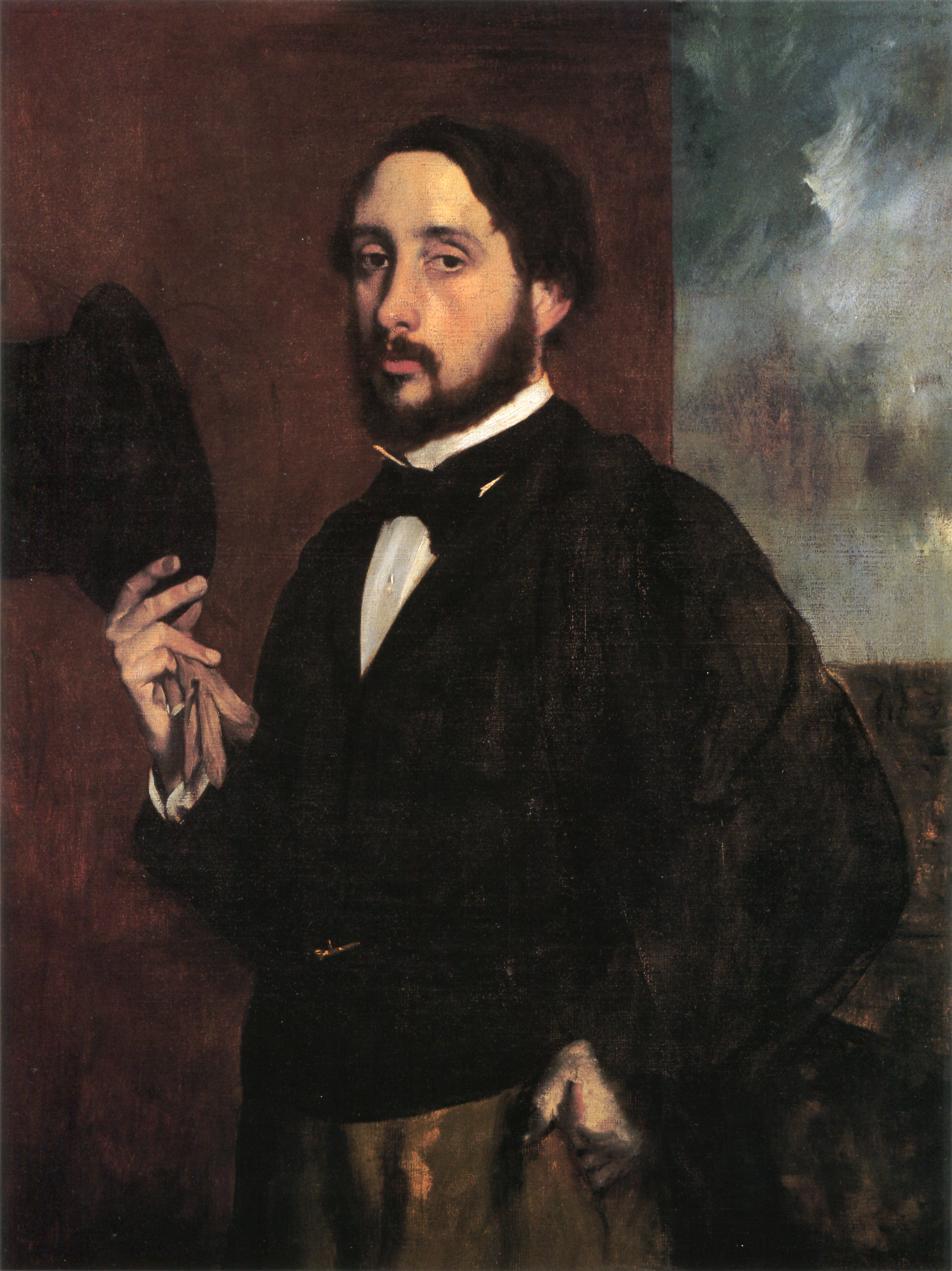Today we start our new special partnership with the Museo Thyssen-Bornemisza in Madrid. We are pretty excited; their collection is marvelous! : ) We hope you will enjoy it too! Today we present to you this beautiful Degas pastel; if you would like to learn more about Degas' pastels please check our online course on Impressionism too. : )
Degas was fascinated by the world of ballet; hence, it figured prominently in many of his paintings. Here, the group of dancers is depicted in mid-performance, as viewed from an upper side box. Only one of the girls in green is shown full-length, captured as she executes a swift, complicated turn. The other figures are cropped, leaving the viewer to imagine the rest. In the background, a number of ballerinas dressed in orange stand against the landscape scenery, awaiting their turn. Degas’ use of a cropped, off-centered pictorial space was influenced by photography and by Japanese prints. He felt that the unfinished, transitory nature of reality could only be conveyed using a fragmented technique. Here, the fleeting nature of the movements is captured with rapid pastel strokes, applied with immense skill.
The Impressionists, who played an active role in modern life, were devotees of the theater, the café-concert, and the opera. They struck up relationships with actors, actresses, ballerinas, and singers. The recently opened opera house designed by Charles Garnier, a landmark building in Haussmann’s new Paris, was one of the places frequented by Edgar Degas, who devoted much of his artistic career to the world of ballet from 1874 onwards. The artist, who regarded dance as an essential vehicle for studying the human figure in movement, repeatedly drew and painted the changing poses of ballerinas. He depicted them in all kinds of positions, rehearsing or in mid-performance on stage, dressing or tying their shoes, and his works bear witness to their huge physical effort and concentration. Ronald Pickvance published an interesting testimony by Louisine Havemeyer, Mary Cassatt’s American friend and an enthusiastic collector of Degas, who reported that when asked why he painted so many ballerinas, the painter had replied, “because, madame, it is only there that I can rediscover the movements of the Greeks.”
- Paloma Alarcó
P.S. Have a look at these most beautiful ballerinas of Edgar Degas'. <3
P.P.S. We have launched the presale of our paper wall and desk calendars for 2021! If you order them before November 8th you will get -30% discount :) We ship with DHL worldwide :) Please check the calendars on our shop: shop.dailyartmagazine.com


 Edgar Degas
Edgar Degas